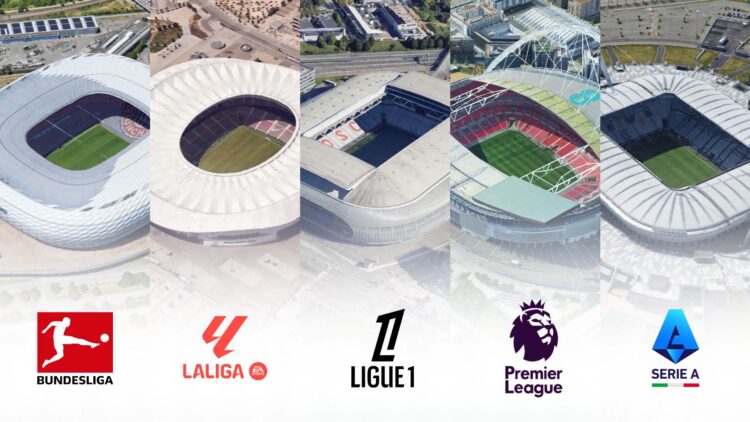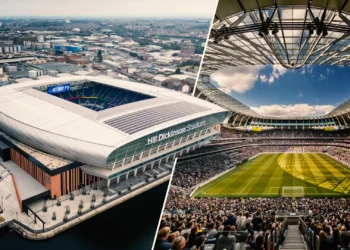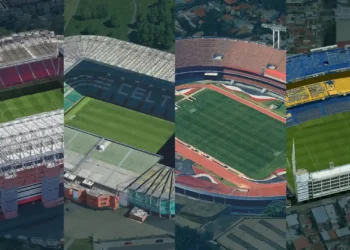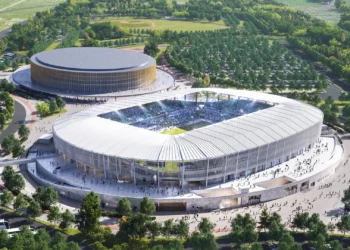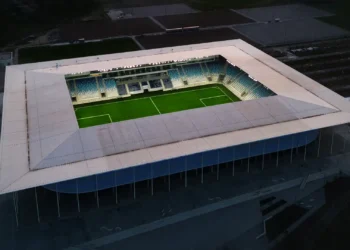The 21st century has seen a surge in stadium construction across Europe, driven by modernisation, increased fan demand and the desire for clubs to increase matchday revenue. But among Europe’s top five leagues – the Premier League, La Liga, Serie A, Bundesliga and Ligue 1 – which has led the charge in building new state-of-the-art arenas?

The push for modernization
Modern stadiums are more than just for watching a football match; they are multi-purpose centers designed for year-round income generation. They feature advanced facilities, better access and enhanced fan experiences, including better views, premium seating and digital connectivity.
In many cases, old stadiums no longer meet the standards expected by fans or governing bodies. Refurbishment is an option, but for many clubs, the solution has started again with purpose-built arenas.
Bundesliga: A leader in new stadiums

Germany’s Bundesliga has been at the forefront of stadium development, not only in the first league, but in almost all leagues, the quality of the stadiums is among the best in the world. The hosting of the 2006 FIFA World Cup was a major catalyst, leading to the construction of iconic venues such as the Allianz Arena in Munich and the Veltins-Arena in Gelsenkirchen. Several other clubs have also moved to modern stadiums, such as Borussia Dortmund’s Signal Iduna Park, which is undergoing constant upgrades to maintain its status as one of the best football venues in the world.

The Bundesliga’s emphasis on fan engagement and access has resulted in stadiums prioritizing affordable ticket prices and a world-class matchday experience.
Premier League: Balancing new builds and expansions

While the Premier League has seen fewer brand new stadiums compared to Germany, there have been notable projects such as Wembley Stadium, Emirates (Arsenal), Tottenham Hotspur’s new Stadium, London Stadium and Brighton’s Amex Stadium and others. Additionally, some clubs have invested heavily in upgrading existing venues, such as Anfield and the Etihad Stadium.

The league’s tremendous financial strength has allowed clubs to invest in advanced stadium technologies, ensuring they remain globally competitive.
La Liga: A focus on renewal

In Spain, La Liga clubs have favored renovating historic stadiums instead of building new ones. Real’s Santiago Bernabéu, Barcelona’s Camp Nou, Villarreal’s Stadium, Levante’s Stadium and Osasune’s stadium are prime examples, undergoing massive modernization projects to maintain their iconic status while adapting to modern demands.

However, there have been some new developments, such as Atlético Madrid’s Wanda Metropolitano and Athletic Bilbao’s Stadium, which show the league’s potential to combine tradition with innovation.
Ligue 1: Progress fueled by Euro 2016


France’s Ligue 1 saw a boom in stadium construction leading up to UEFA Euro 2016. This included new buildings such as the Parc Olympique Lyonnais, Matmut Atlantique and the Allianz Riviera in Nice. These projects transformed the league’s infrastructure and enhanced its global reputation.
Series A: Slow progress and endless red tape

Italy’s Serie A has been slower to build new stadiums, often hampered by bureaucracy and financial constraints. However, Juventus set a precedent with the Allianz Stadium, which has inspired other clubs to follow suit.

Projects like Rome’s long-awaited Stadio della Roma and Milan and Inter’s plans for a new arena signal change on the horizon. There were also some stadiums that were changed, such as that of Udinese (Stadio Friuli) and Atalanta (Gewiss Stadium)
Among Europe’s major leagues, the Bundesliga stands out for the number and quality of new stadiums built since 2000, largely spurred by the 2006 World Cup. Ligue 1 follows closely, thanks to preparations for Euro 2016. The Premier League, despite its wealth its, has focused more on renovating iconic places than building new ones. La Liga remains committed to improving existing infrastructure.
The trend towards modern multi-purpose stadiums reflects the evolution of football into a global entertainment industry. As clubs compete on and off the pitch, their investments in world-class venues play a key role in shaping the future of the sport.

